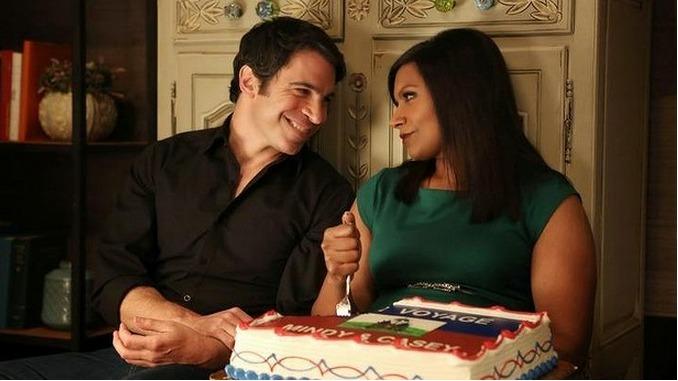First published in Daily Life, January 2014
We’ve all been faced with the kind of question that’s designed not to find out what we really want but to tell us what we already know. For Mindy Kaling, the writer, creator and star of The Mindy Project, a sweet if occasionally patchy sitcom based on her alter-ego Mindy Lahiri, an Indian-American obstetrician trying to square a lifelong addiction to Meg Ryan movies with a real-world litany of romantic disappointment, this question – posed by a red-carpet reporter at the Oscars last March – confirmed that the payoffs of being a non-white female showrunner with your own network comedy don’t exempt you from well-meaning queries about your racial preferences. “Who’s my type? Good-looking,” Kaling shot back, channeling the comic timing that landed her in The Office’s writer’s room at age 24. The reporter had the same response as critics who wonder why the winsome Dr Lahiri spends three-and-a-half seasons bedding run-of-the-mill white guys: “So, any colour?”
E. Alex Jung is one of these critics. In “Mindy Kaling is Not Your Pioneer,” an Al Jazeera America essay published earlier this week, Jung argues that Kaling, who once watched Bollywood actresses audition for a role she’d written but wasn’t deemed attractive enough to star in, depicts a short-sighted view of relationships that negates The Mindy Project’srevolutionary potential. “It is no accident that Dr. Mindy Lahiri, the character Kaling plays on the show, dates white, upper-middle-class men — Wall Street bankers, NYU Latin professors, lawyers and Web designers. This recurrence is not a question of fate running into you but the perpetuation of the great lie of romance, which suggests that love and marriage are not somehow informed by class, race and gender conventions,” he writes.
To me, however, Kaling does actively constructs a world that toys with class, race and gender conventions. Dr Lahiri might make cringe-worthy jokes about her figure and hook up with an obnoxious skateboarder (Timothy Olyphant) when she wants to prove that she isn’t picky about who she dates but she’s also a lovable narcissist who’s an advocate ofKeeping Up With the Kardashians and the thrills of casual sex.
Although Kaling’s taste in men depressingly nods to the idea that mainstream masculinity is the most desirable, she casts herself in send-ups of the ’90s rom-com confident in the knowledge that her ethnicity puts a pin in the genre’s obsession with All-American white girls. And in “Danny and Mindy,” the Season Two finale that sees Mindy Lahiri give in to her stop-start relationship with Springsteen-loving surgeon Danny Castellano, a sub-plot involving a missed subway connection, cute email messages and an Empire State Building montage lampoon Nora Ephron classics like You’ve Got Mail and Sleepless in Seattle.Acknowledging the homogenising effects of the rom-com as well as the pleasure it can offer viewers in the space of one scene may be The Mindy Project’s greatest achievement.
In “A Mindy Project Roundtable”, an April 2014 feature for Buzzfeed, writer Ayesha Siddiqi makes a compelling case for why the show’s wins don’t counteract the ways it fails. Siddiqi believes that The Mindy Project buys into the “racial economics of desirability” and that the show’s interest in unremarkable white men and quirky rom-com meet-cutes “feel like engaging in a fantasy that shouldn’t have appeared fantastic in the first place.” She also argues that The Mindy Project’s curiously apolitical landscape matches the lack of solidarity Kaling shows with women of colour in real life. “Kaling always bristles at people responding to her as a woman of colour instead of a just a [white] woman. She acts as if race is something that doesn’t exist in whiteness and can therefore be diluted through it,” she says.
But solidarity and vision aren’t always mutually exclusive. From Seinfeld’s proclivity for pretty Manhattan brunettes to Woody Allen’s disturbing fixation with Hollywood starlets, popular culture is ruled by show-runners who aren’t forced to defend the world they create or the implications of their fantasies, no matter how limited. Kaling says that she doesn’t “see herself as an outsider despite looking like one to a lot of people” and that sherefuses “to view herself in such terms,” in an October 2014 with NPR. The fact that The Mindy Project is fixated on whiteness can feel disappointing in a world in which minorities struggle to establish their personhood. But using this to discredit the achievements of its creator is another problem altogether.
